The snakes residing in Grand Canyon National Park shouldn’t dissuade you from visiting this 1,218,375-acre wonder. From the awe-inspiring views at the rim of the canyon to the turbulent Colorado River below, the Grand Canyon is endlessly beautiful and fascinating.
Snakes and other reptiles play an important role in the Grand Canyon’s complex ecosystem. Some are prey for other animals, some help control the insect and rodent population. A visit to this natural wonder is an opportunity to encounter some amazing and unique wildlife, snakes included.
Let’s take a closer look at some of the prominent snake species that call the Grand Canyon home.
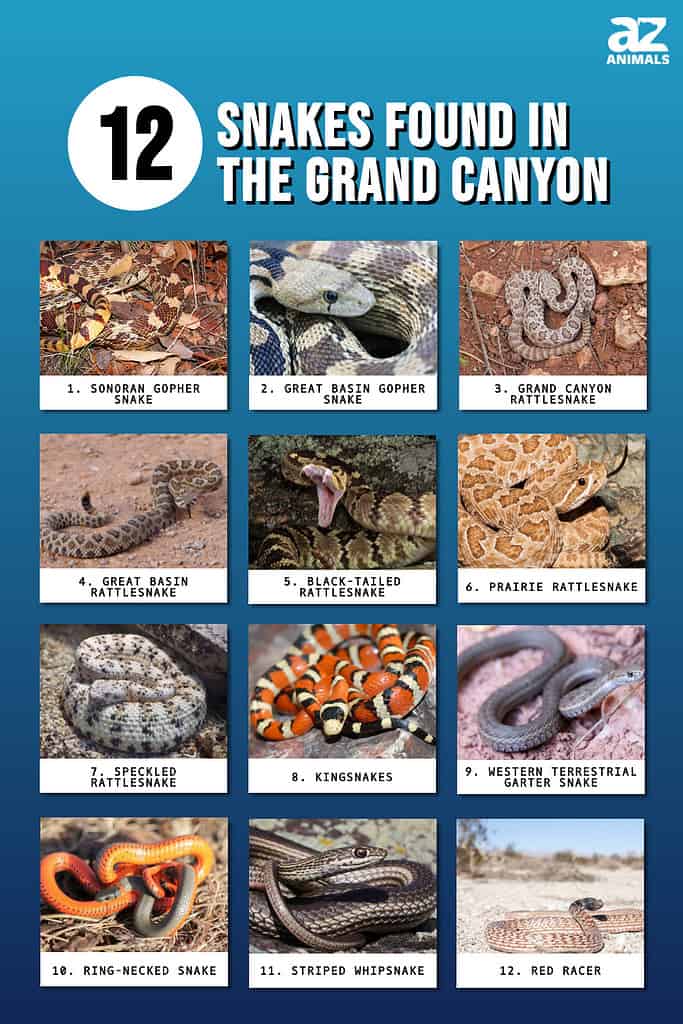
Gopher Snakes Pretend to Be Dangerous
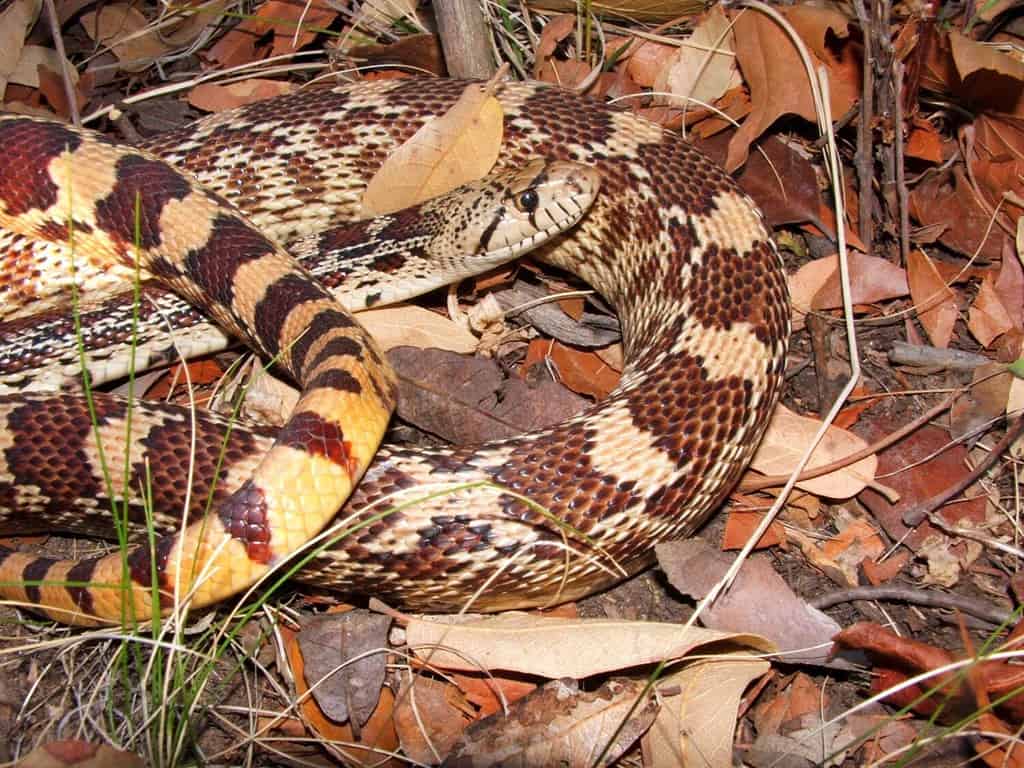
The Sonoran gopher snake has black bands on its tail that makes it appear like a rattlesnake’s tail.
©Matt Jeppson/Shutterstock.com
The canyon hosts two subspecies of this snake type, the Sonoran gopher snake (Pituophis catenifer affinis) and the Great Basin gopher snake (Pituophis catenifer deserticola). They’re nonvenomous snakes, but they want you to think otherwise. Gopher snakes have black bands on their tails that look like a rattlesnake’s rattle. They even vibrate their tail when threatened, imitating rattlesnake behavior. Gopher snakes can reach a length of 92 inches, making them the longest snakes in the Grand Canyon.
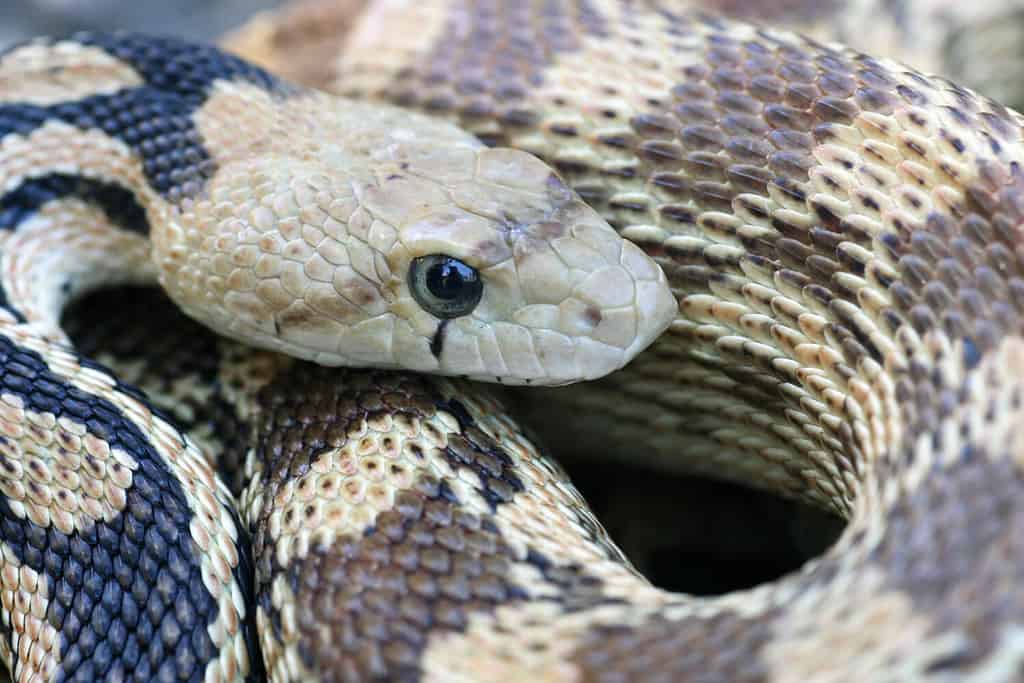
The Great Basin gopher snake is nonvenomous but can act like the venomous rattlesnake when threatened.
©Michael Benard/Shutterstock.com
Rattlesnakes Are Well Represented
Considering the high number of venomous snake species in Arizona — heck, the state reptile is the Arizona ridge-rosed rattlesnake — it makes sense that multiple rattlesnake species call the Grand Canyon home. Scary as they are, these snakes generally try to escape or hide when they feel threatened. With no other option, they famously rattle their tales to create a rattling, buzzing noise that warns away potential threats. This enables them to conserve their powerful venom for hunting. Rattlesnakes are pit vipers, meaning they hunt using two specialized organs on the sides of their head that can detect the body heat of their prey.
Grand Canyon Rattlesnake
The Grand Canyon rattlesnake, Crotalus oreganus abyssus, exists only in the Grand Canyon, and nowhere else in the world. This snake’s pale pink color helps it blend into its surroundings.
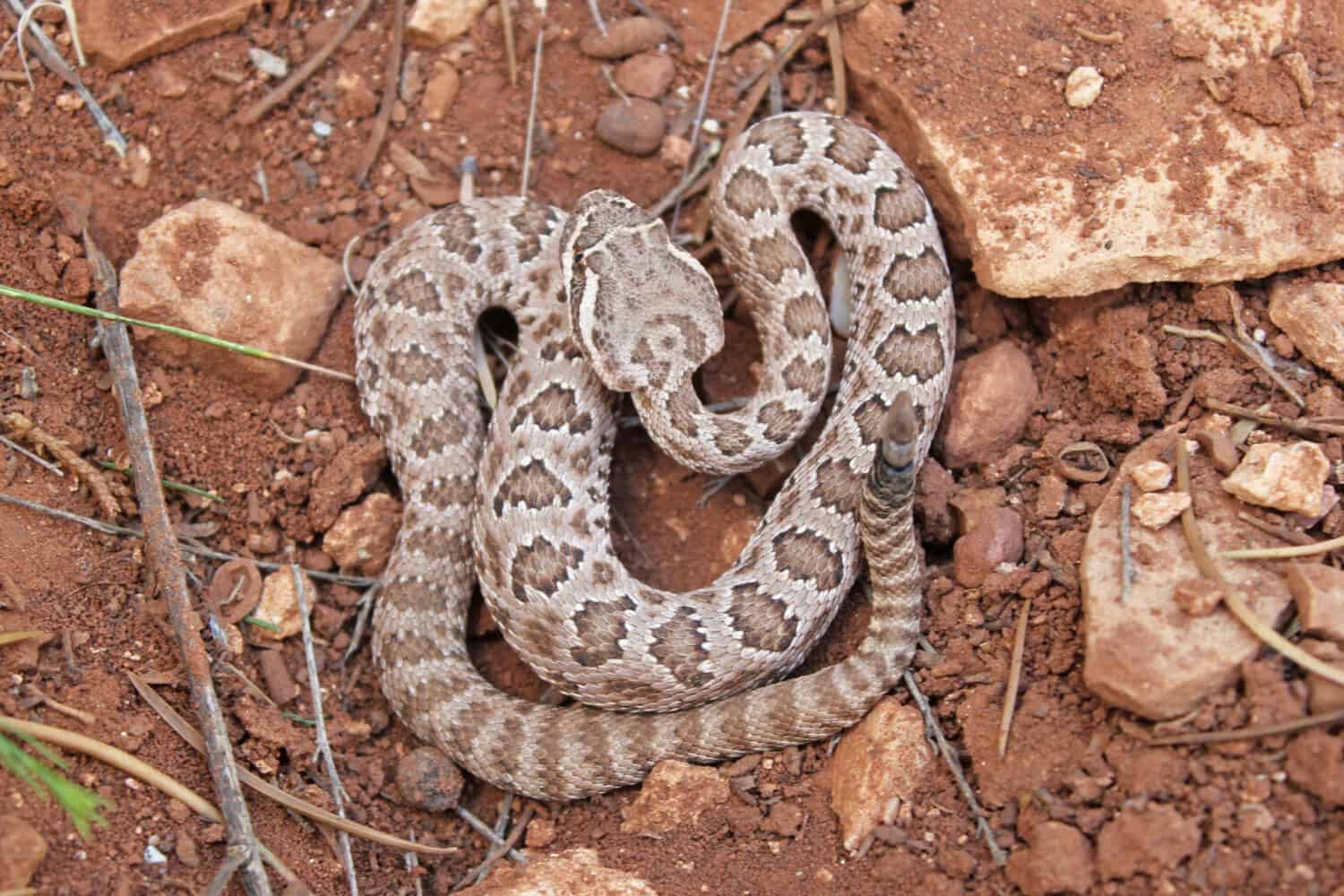
The Grand Canyon rattlesnake is a subspecies found nowhere else in the world.
©Creeping Things/Shutterstock.com
Great Basin Rattlesnake
The Great Basin rattlesnake, Crotalus oreganus lutosus, prefers to live on the rim of the canyon, specifically the North Rim. Both the great basin and Grand Canyon rattlers are considered subspecies of the western rattlesnake.
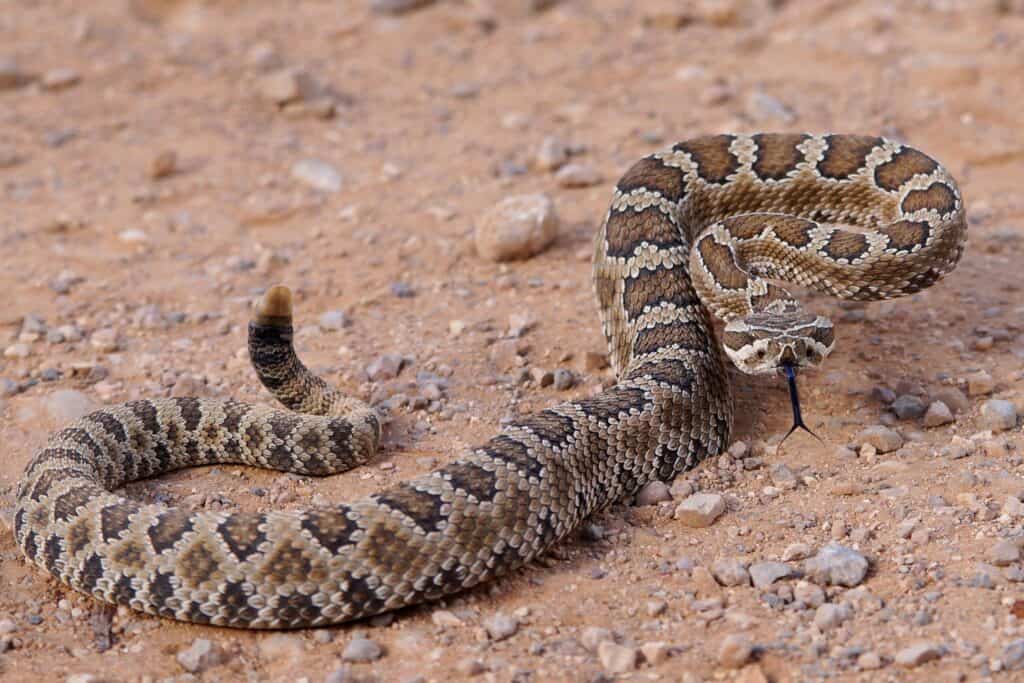
Great Basin rattlesnakes are only between two and four feet long so they aren’t that large comparatively.
©Matt Jeppson/Shutterstock.com
Black-Tailed Rattlesnake
The black-tailed rattlesnake, Crotalus molossus, has a distinctive black patch on its tail, though you’re better off not getting close enough to see it.
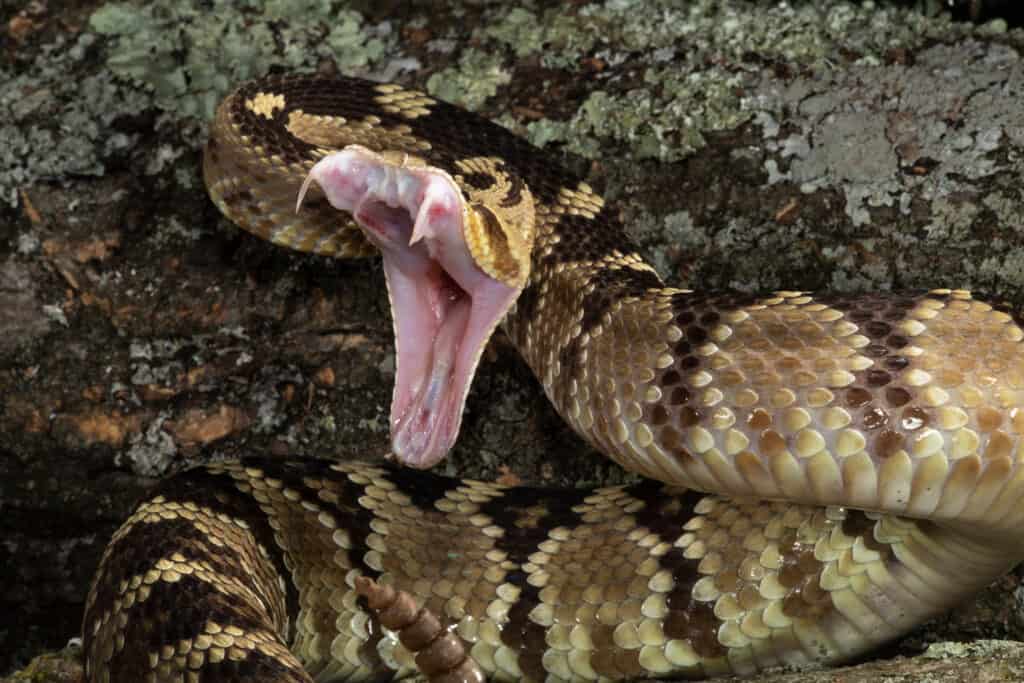
Black-tailed rattlesnakes are venomous pit vipers.
©Joe McDonald/Shutterstock.com
Prairie Rattlesnake
The prairie rattlesnake, Crotalus viridisi, is another species that seems to keep to the rim of the canyon.
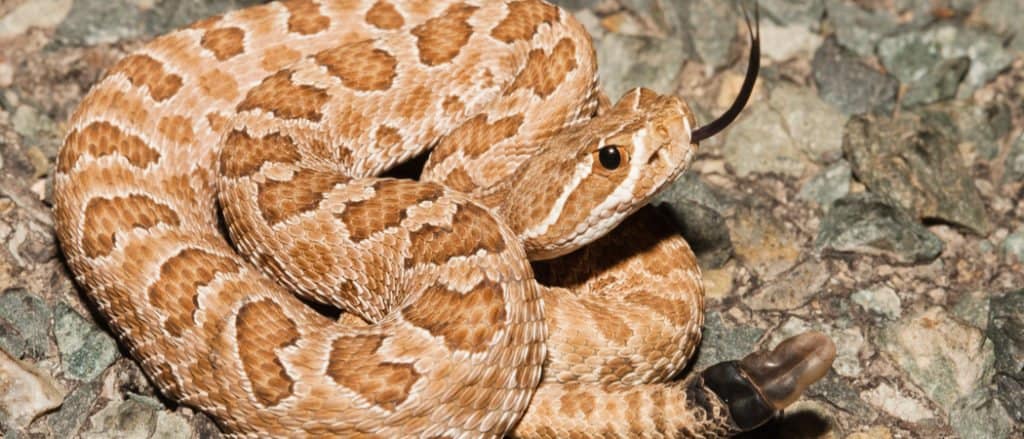
The prairie rattlesnake is usually found in the western part of the Grand Canyon Park.
©Nathan A Shepard/Shutterstock.com
Speckled Rattlesnake
The speckled rattlesnake, Crotalus Pyrrhus, is mostly sighted in the western part of the park.
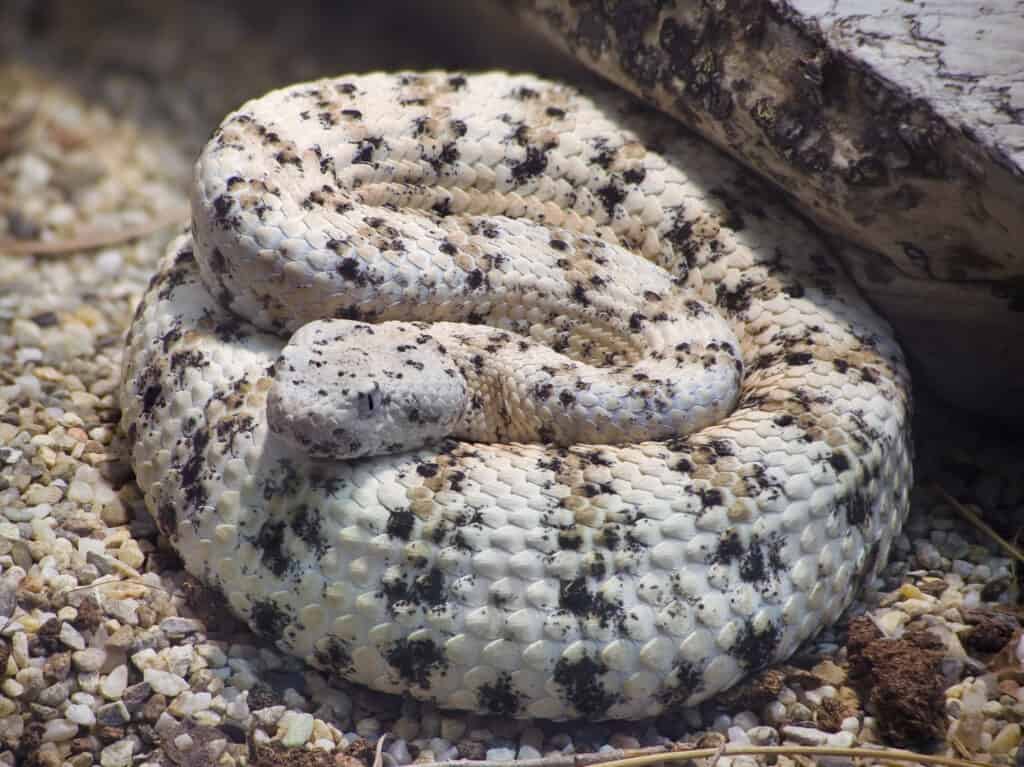
The speckled rattlesnake’s colors help it to blend into the rocks of the Grand Canyon.
©Dario Sabljak/Shutterstock.com
Other Snakes You Might Meet in the Grand Canyon
Kingsnakes
The kingsnakes category includes common kingsnakes and California kingsnakes. These nonvenomous snakes have a distinct red, white, and black banded pattern that’s hard to miss.
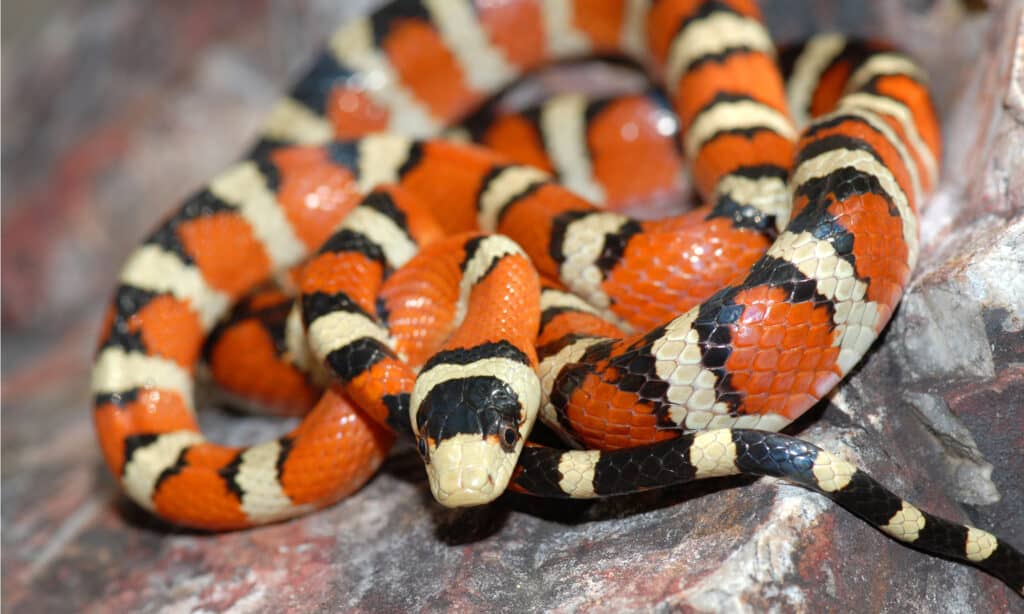
Kingsnakes are among the Grand Canyon’s most colorful snakes.
©Rusty Dodson/Shutterstock.com
Western Terrestrial Garter Snake
The western terrestrial garter snake (Thamnophis elegans) is a wide-ranging garter snake that dwells as far east as Oklahoma. This small snake typically has a greyish-green back, a yellow belly, and body-length yellow stripes running along its sides.
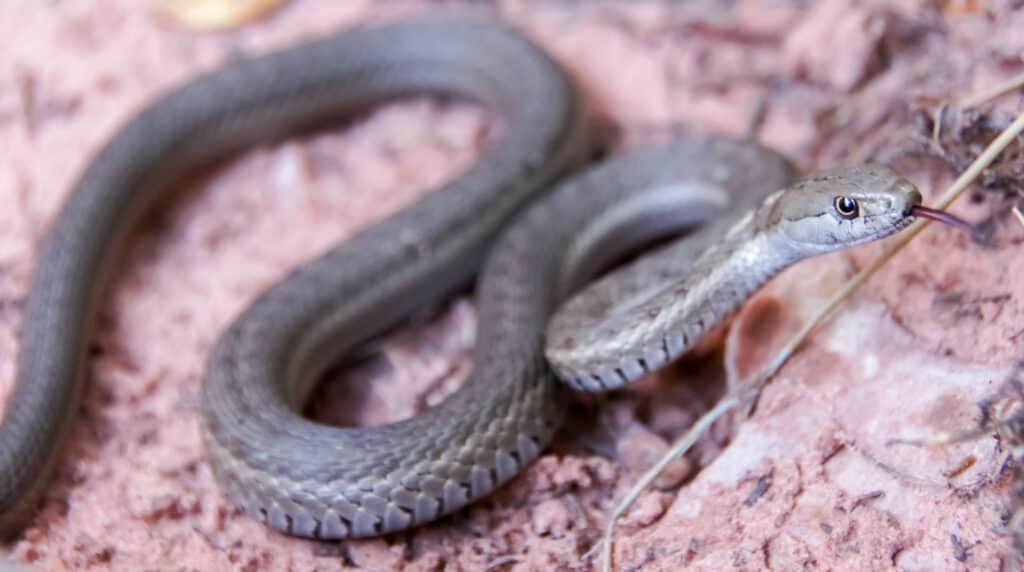
The western terrestrial garter snake takes on defensive posturing when threatened.
©iStock.com/yhelfman
Ring-Necked Snake
The ring-necked snake (Diadophis punctatus), true to the name, has a distinct band around its neck. You can also recognize it by the bright yellow, red, or orange coloration on its belly. Ring-necked snakes release a pungent, sticky secretion when handled, so hands off! Of course, it’s never okay to approach or touch wildlife in any case.
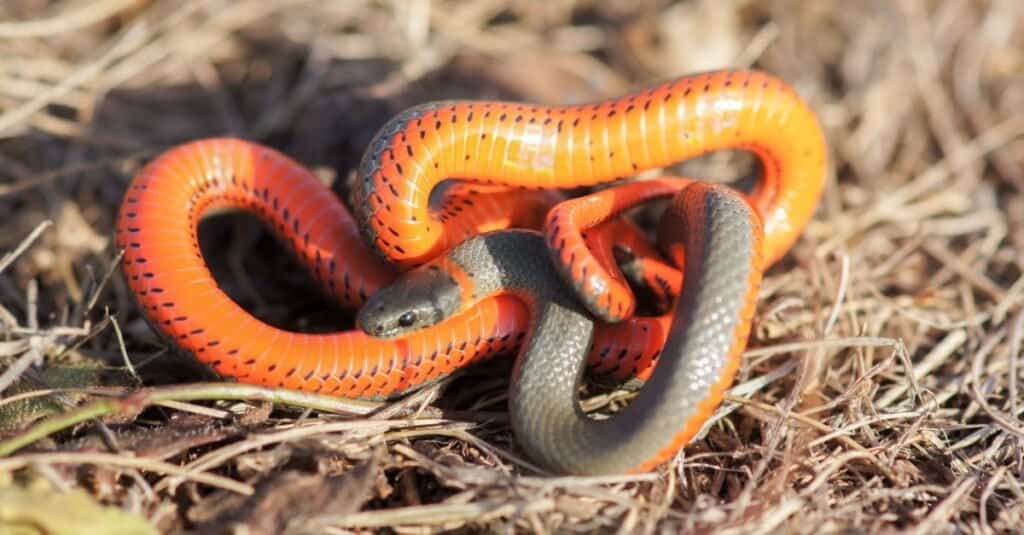
Small and colorful, the ring-necked snake is nocturnal and non-venomous.
©yhelfman/Shutterstock.com
Striped Whipsnake
The striped whipsnake (Masticophis taeniatus) is an alert, fast-moving snake may be just a blur as it slithers away from you. But these snakes grow as long as 72 inches, so you might get a look at the striking, cream-colored stripes that run the length of its black or brown body.
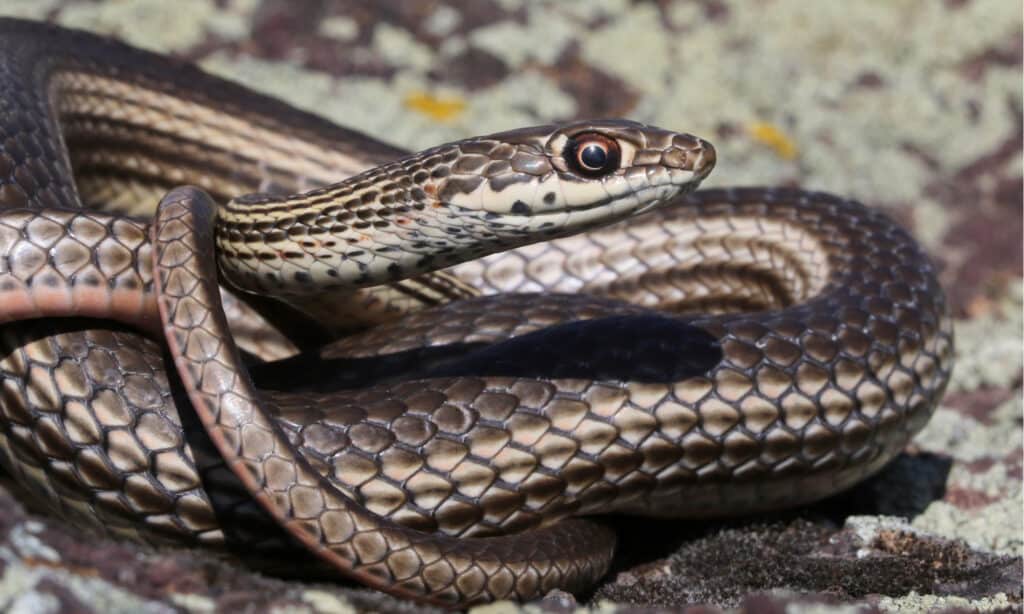
Striped whipsnakes can grow as long as 72 inches.
©Randy Bjorklund/Shutterstock.com
Red Racer
The red racer (Coluber flagellum piceus) is another fast-moving snake. It is a good climber, though it prefers to live in open areas. It’s not venomous but can become aggressive if it feels threatened. The racer’s color is more light brown, pink, or reddish than truly red.
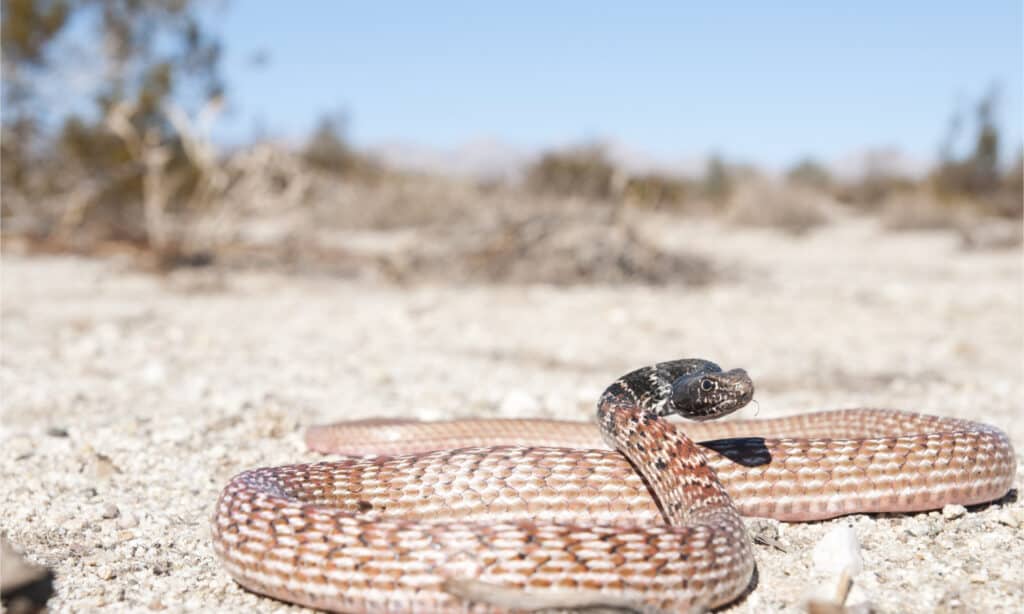
Red racers are fast-moving and can measure up to 5.5 feet long.
©Jason Mintzer/Shutterstock.com
Snake Safety:
Keep a distance from any wildlife you encounter. Ideally, stay at least 50 feet from reptiles, birds, and small mammals, and 100 feet away from larger animals.
Don’t bother the snakes. A snake can strike faster than you think, and reach for nearly half its body length. Most snakes will retreat if they have the opportunity. Give them room: take two giant steps back from any snake you see. Do not try to handle a snake that you think is dead.
Don’t step into places that you can’t see. Don’t pick up rocks or logs.
Wear boots and long pants to prevent snake bites. Stay on paths and avoid the tall grass.
Just so you know: rattlesnakes can swim.
Summary of 12 Snakes Slithering Around the Grand Canyon
Here’s a recap of the dozen snakes we took a look at that make their home in the Grand Canyon.
| Number | Snake Species | Danger Level |
|---|---|---|
| 1 | Sonoran Gopher Snake | Nonvenomous but pretends to be otherwise |
| 2 | Great Basin Gopher Snake | Nonvenomous but pretends to be otherwise |
| 3 | Grand Canyon Rattlesnake | Venomous |
| 4 | Great Basin Rattlesnake | Venomous |
| 5 | Black-Tailed Rattlesnake | Venomous |
| 6 | Prairie Rattlesnake | Venomous |
| 7 | Speckled Rattlesnake | Venomous |
| 8 | Kingsnakes | Nonvenomous |
| 9 | Western Terrestrial Garter Snake | Mildly venomous saliva |
| 10 | Ring-Necked Snake | Weak venom in saliva |
| 11 | Striped Whipsnake | Nonvenomous |
| 12 | Red Racer | Nonvenomous but aggressive |
The photo featured at the top of this post is © Wisanu Boonrawd/Shutterstock.com
Discover the "Monster" Snake 5X Bigger than an Anaconda
Every day A-Z Animals sends out some of the most incredible facts in the world from our free newsletter. Want to discover the 10 most beautiful snakes in the world, a "snake island" where you're never more than 3 feet from danger, or a "monster" snake 5X larger than an anaconda? Then sign up right now and you'll start receiving our daily newsletter absolutely free.
Thank you for reading! Have some feedback for us? Contact the AZ Animals editorial team.






